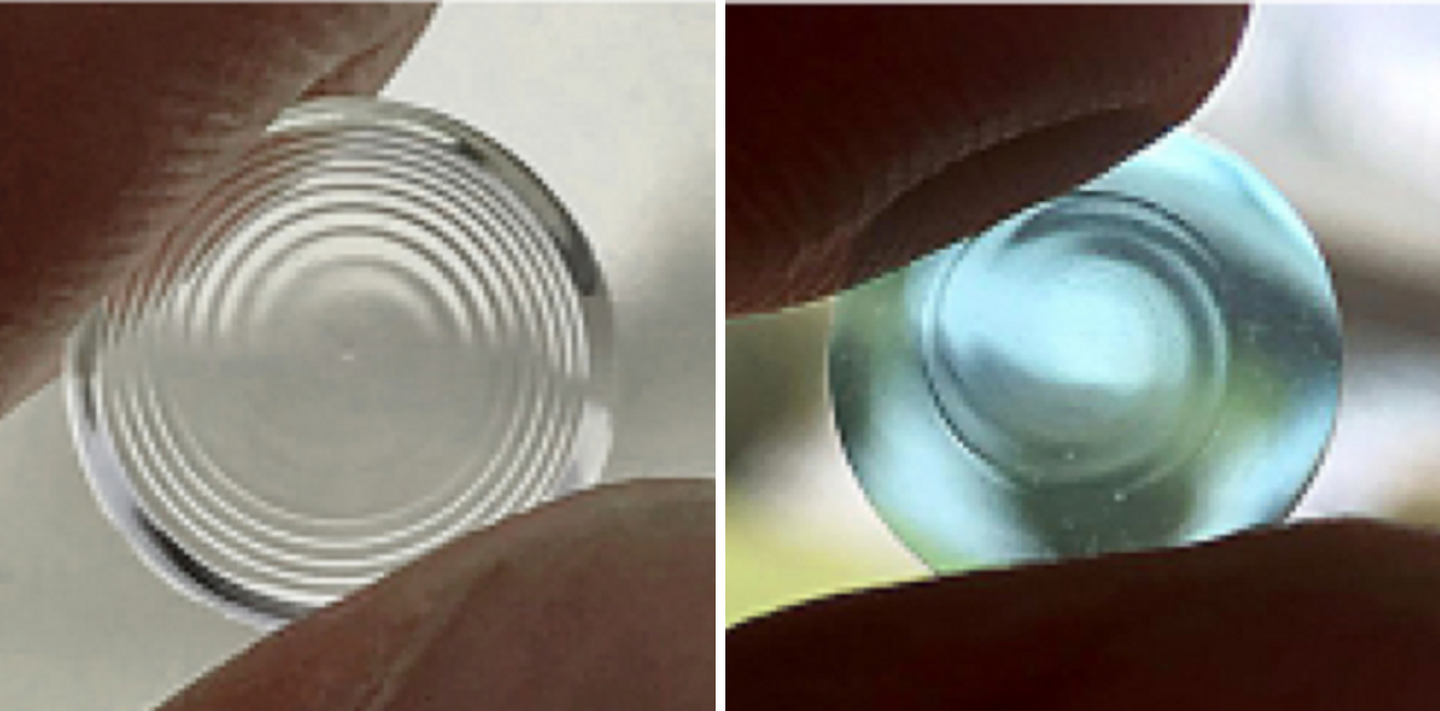Spiral-shaped lenses revolutionize cataracts and vision treatment
A cutting-edge new spiral-shaped lens has been developed, offering clear focus at different distances in various lighting conditions.

A cutting-edge new spiral-shaped lens has been developed by researchers, offering clear focus at different distances in various lighting conditions. (CREDIT: Optica)
A cutting-edge new spiral-shaped lens has been developed by researchers, offering clear focus at different distances in various lighting conditions.
Unlike traditional multifocal lenses, this innovative lens, known as the spiral diopter, eliminates distortions and could revolutionize vision correction and imaging technologies.
Bertrand Simon, from the Photonics, Numerical, and Nanosciences Laboratory (LP2N) in France, explains the significance of this breakthrough: "Unlike existing multifocal lenses, our lens performs well under a wide range of light conditions and maintains multifocality regardless of the size of the pupil.
Researchers have developed a new type of lens that uses a spiral-shaped surface to maintain a clear focus at different distances in varying light conditions. (CREDIT: Laurent Galinier)
For potential implant users or people with age-related farsightedness, it could provide consistently clear vision, potentially revolutionizing ophthalmology."
Detailed in Optica, the journal of the Optica Publishing Group, the spiral diopter functions similarly to progressive lenses but with improved clarity and adaptability to changing light. Its spiral design creates multiple focus points, enabling clear vision at various distances.
"In addition to ophthalmology applications, the simple design of this lens could greatly benefit compact imaging systems," says Simon. "It would streamline the design and function of these systems while also offering a way to accomplish imaging at various depths without additional optical elements."
Related News
The idea for the spiral lens originated from Laurent Galinier of SPIRAL SAS in France, while studying corneal deformations. Galinier envisioned a lens with a unique spiral design that creates an optical vortex, allowing light to spin and produce multiple focus points.
This design simplifies the process of creating optical vortices, marking a significant advancement in optics.
The lens was crafted with precision using advanced digital machining techniques. Testing revealed consistent image quality regardless of aperture size, with the ability to modify optical vortices by adjusting the topological charge. Volunteers reported improved visual acuity across different distances and lighting conditions.
The new lens could be used on contact lenses (shown), in intraocular implants for cataracts and to create new types of miniaturized imaging systems. (CREDIT: Laurent Galinier)
Developing the lens required collaboration across disciplines, combining intuitive design with advanced fabrication techniques.
Simon emphasizes the importance of this interdisciplinary approach: "The spiral diopter lens, first conceived by an intuitive inventor, was scientifically substantiated through an intensive research collaboration with optical scientists."
Comparison between (a) a conventional astigmatic lens and (b) our spiral lens. For each lens a ray tracing representation is given as well as a representation of the PSF in each expected focal zone. (CREDIT: Optica)
Future research aims to further understand the lens's optical vortices and assess its performance in real-world conditions. Exploration into applying the concept to prescription eyeglasses is underway, potentially offering clear vision across multiple distances.
"This new lens could significantly improve people’s depth of vision under changing lighting conditions," says Simon. "Future developments might also lead to advancements in compact imaging technologies, wearable devices, and remote sensing systems."
The spiral diopter lens represents a promising innovation with far-reaching implications for vision correction and imaging technologies. Its ability to maintain clear focus in varying conditions could enhance quality of life for many individuals while driving advancements in various fields.
Note: Materials provided above by The Brighter Side of News. Content may be edited for style and length.
Like these kind of feel good stories? Get the Brighter Side of News' newsletter.
Joseph Shavit
Head Science News Writer | Communicating Innovation & Discovery
Based in Los Angeles, Joseph Shavit is an accomplished science journalist, head science news writer and co-founder at The Brighter Side of News, where he translates cutting-edge discoveries into compelling stories for a broad audience. With a strong background spanning science, business, product management, media leadership, and entrepreneurship, Joseph brings a unique perspective to science communication. His expertise allows him to uncover the intersection of technological advancements and market potential, shedding light on how groundbreaking research evolves into transformative products and industries.



